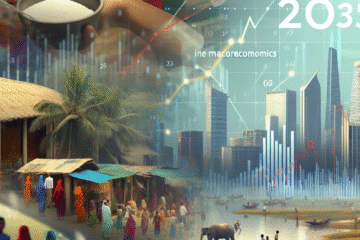Bangladesh Economy Daily Brief (5 pm Dhaka)
– Growth outlook dims: The Asian Development Bank trimmed Bangladesh’s GDP forecast to 5.0% for FY26 and sees growth around 4.0% in FY25, citing persistent price pressures. The lender warned that double-digit inflation remains a risk, underscoring the difficult trade-off between supporting activity and stabilising prices.
– Inflation in focus: With inflation seen staying elevated, the policy priority is shifting to price stability. Any tightening to curb inflation could further cool growth, while delayed action risks entrenching high prices and eroding real incomes.
– Central bank reform signal: Authorities are moving to strengthen Bangladesh Bank’s autonomy as an independent regulator—part of a broader financial-sector reform push. Greater independence could improve policy credibility, strengthen bank supervision and help anchor inflation expectations.
– Exports under strain: A continued decline in shipments to the US—Bangladesh’s single-largest apparel market—poses a near-term headwind for orders, factory utilisation and employment in the RMG sector. Weaker US demand also threatens export earnings and reserve rebuilding.
– Private sector pulse: Business leaders flagged stagnation in private-sector activity, urging faster banking sector clean-up and predictable policymaking to unlock investment and jobs. Restoring credit discipline and liquidity in the banking system remains central to any recovery.
– Sustainability financing: In a positive signal for green industrial upgrades, ADB signed a $30 million sustainability-linked loan with Envoy Textiles to finance efficiency and environmental improvements. While modest in size, the deal points to rising investor appetite for ESG-aligned projects.
– Energy strategy debate: Analysts highlighted natural gas as a potential bridge fuel for the next phase of growth, contingent on a clear plan for domestic exploration, LNG procurement, and cost-reflective pricing that protects competitiveness.
– Trade infrastructure: Policymakers are looking to leverage the Moheshkhali–Matarbari port complex to diversify exports—including fisheries—and ease logistics bottlenecks beyond RMG.
What to watch next: September inflation print and October remittance flows for signs of easing price pressures and external support; any formal steps on the Bangladesh Bank autonomy framework; and RMG order books ahead of the holiday season in key Western markets.


